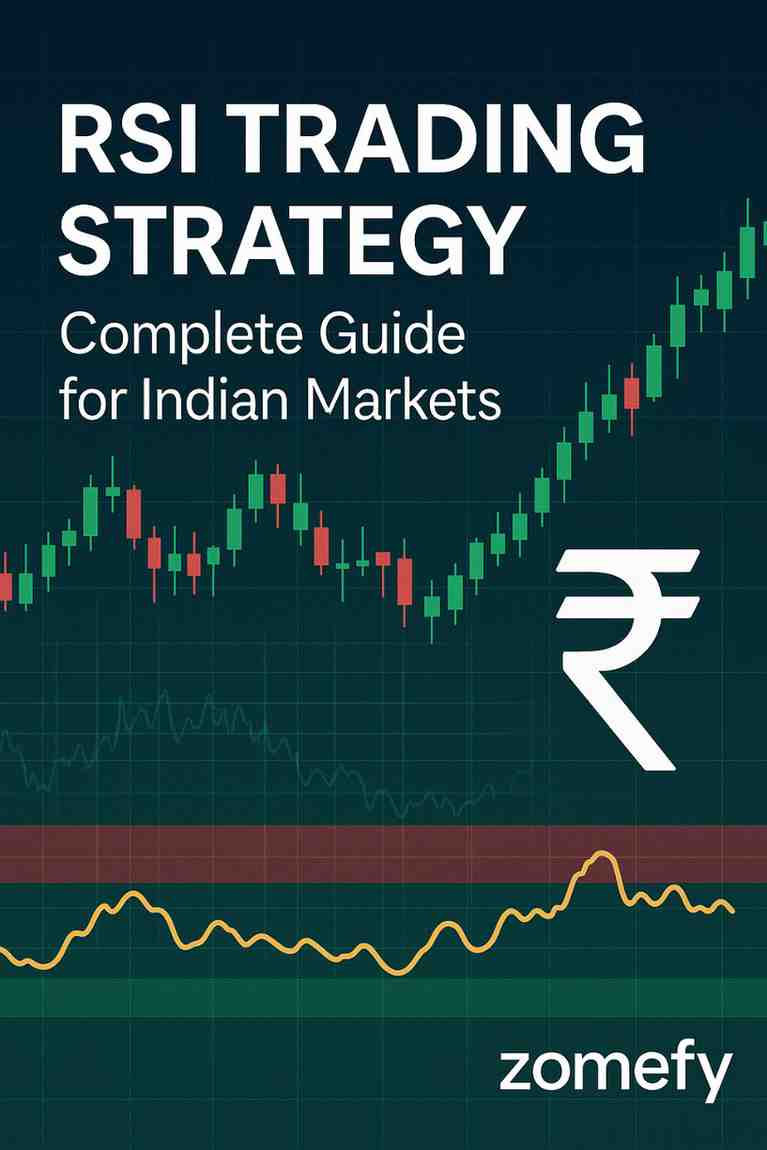Navigating Embedded Lending in India 2025: Unlocking New Opportunities in Digital Credit and Consumer Finance
The embedded lending landscape in India is undergoing a transformative shift, driven by rapid digitalization, evolving consumer behavior, and supportive regulatory frameworks.
Navigating Embedded Lending in India 2025: Unlocking New Opportunities in Digital Credit and Consumer Finance
What You Can Do Next
- Read the full article for complete insights
- Save for later reference
- Share with others learning about this topic
Image not available
The embedded lending landscape in India is undergoing a transformative shift, driven by rapid digitalization, evolving consumer behavior, and supportive regulatory frameworks. As of 2025, embedded lending—where credit is seamlessly integrated into non-financial platforms such as e-commerce, fintech apps, and retail marketplaces—is emerging as a key growth engine in the broader digital finance ecosystem. With India’s digital lending market valued at over ₹1,650 crore (USD 200 million) in 2024 and projected to expand at a robust pace, investors and financial professionals are presented with new opportunities to participate in this high-growth sector. The convergence of technologies like UPI, IndiaStack, and Account Aggregator frameworks is enabling lenders to offer contextual, near-instant credit at the point of need, thereby reducing friction and boosting conversion rates. This article provides a comprehensive analysis of the embedded lending market in India, highlighting key trends, leading players, regulatory developments, and actionable investment strategies for retail investors and financial professionals.
Understanding Embedded Lending in India
Embedded lending refers to the integration of credit products directly into non-financial platforms such as e-commerce sites, fintech super-apps, and retail marketplaces. Unlike traditional lending, which requires a separate application process, embedded lending enables consumers to access instant credit at the point of purchase or need, often with minimal friction. In India, this model is gaining traction due to the widespread adoption of smartphones, UPI-enabled payments, and digital identity frameworks like Aadhaar and e-KYC. These technologies have streamlined borrower onboarding and reduced the time required for credit disbursal.
The embedded lending market in India is dominated by e-commerce platforms, fintech startups, and payment aggregators. Companies like Flipkart, Pine Labs, and Paytm are leading the charge by offering buy-now-pay-later (BNPL) services, instant loans, and point-of-sale financing. The sector is also seeing increased participation from traditional banks and non-banking financial companies (NBFCs), which are partnering with fintech firms to expand their reach and tap into underserved segments such as micro, small, and medium enterprises (MSMEs).
The growth of embedded lending is further supported by regulatory initiatives such as the Account Aggregator framework and the Open Credit Enablement Network (OCEN). These frameworks enable lenders to access customer data with consent, facilitating more accurate credit assessments and personalized lending offers. As a result, embedded lending is not only improving access to credit but also enhancing the overall customer experience.
Key Drivers of Embedded Lending Growth
Several factors are driving the rapid growth of embedded lending in India:
These drivers are creating a virtuous cycle of innovation, adoption, and growth in the embedded lending sector.
Market Size and Growth Trends
The embedded lending market in India is experiencing exponential growth, with the digital lending market valued at USD 200.13 million in 2024. This figure is expected to expand significantly over the next few years, driven by deepening fintech penetration, progressive regulatory frameworks, and enhanced digital infrastructure. The Asia Pacific region, including India, is projected to register the highest growth rates in embedded lending, with a CAGR of over 20% in some estimates.
The following table provides a comparative overview of embedded lending market size and growth projections from leading research firms:
Research Firm | Market Size (2025) | Forecast (2032/2035) | CAGR (2025-2032/2035) |
|---|---|---|---|
| Coherent Market Insights | USD 7.66 Bn | USD 28.43 Bn (2032) | 20.6% |
| Future Market Insights | USD 9.2 Bn | USD 35.8 Bn (2035) | 14.6% |
| MarketResearch.com | USD 6.2 Bn (2024) | USD 16.1 Bn (2030) | 17.4% |
The table highlights the consensus among research firms that the embedded lending market is poised for robust growth, with India emerging as a key growth engine in the Asia Pacific region. The variations in market size estimates reflect differences in methodology and scope, but the overall trend is clear: embedded lending is set to become a major segment of the digital finance ecosystem.
Regional Growth Comparison
The growth of embedded lending is not uniform across regions. The Asia Pacific region, led by India, China, and Indonesia, is expected to register the highest growth rates, driven by rapid digitalization and rising smartphone adoption. The following table compares the forecast CAGR for embedded lending in key countries:
Country | Forecast CAGR (2025-2035) |
|---|---|
| India | 20.1% |
| China | 20.1% |
| Australia | 23.1% |
| United States | 16.4% |
| Germany | 15.0% |
India’s high growth rate is attributed to its large unbanked and underbanked population, rapid digitalization, and supportive regulatory environment. The country’s embedded lending market is expected to outpace many developed markets, presenting significant opportunities for investors and financial professionals.
Leading Players and Business Models
The embedded lending landscape in India is characterized by a diverse mix of players, including e-commerce platforms, fintech startups, payment aggregators, and traditional lenders. These companies are leveraging technology and partnerships to offer a range of embedded lending products, from BNPL services to instant loans and point-of-sale financing.
The following table provides a comparison of leading embedded lending players in India:
Company | Key Products | Partnerships | Notable Developments |
|---|---|---|---|
| Flipkart | BNPL, instant loans | Various NBFCs | Secured lending license from RBI in June 2025 |
| Pine Labs | Point-of-sale machines, BNPL | PayPal, various banks | Approved for IPO in September 2025 |
| Paytm | Instant loans, BNPL | Various NBFCs | Expanding embedded lending offerings |
| Amazon India | BNPL, instant loans | Various NBFCs | Expanding embedded lending offerings |
These companies are at the forefront of innovation in embedded lending, offering a range of products that cater to different customer segments. Their success is driven by strategic partnerships, technological innovation, and a deep understanding of local market needs.
Business Model Comparison
Embedded lending business models can be broadly categorized into three types: platform-based, service-based, and hybrid models. The following table compares these models:
Model | Description | Pros | Cons |
|---|---|---|---|
| Platform-based | Embedded lending integrated into a non-financial platform (e.g., e-commerce site) | Seamless customer experience, high conversion rates | Dependent on platform traffic, regulatory risks |
| Service-based | Embedded lending offered as a service to other platforms (e.g., payment aggregator) | Scalable, can serve multiple platforms | Requires strong technology and compliance infrastructure |
| Hybrid | Combination of platform and service models | Flexible, can adapt to different market needs | Complex to manage, higher operational costs |
Each model has its own strengths and weaknesses, and the choice of model depends on the company’s strategic goals, resources, and market conditions. Platform-based models are ideal for companies with a large customer base, while service-based models are suitable for technology providers looking to scale their offerings.
Regulatory Landscape and Challenges
The embedded lending sector in India operates within a dynamic regulatory environment. Key regulatory frameworks such as the Account Aggregator framework and OCEN are enabling seamless data sharing and credit assessment, while initiatives like e-KYC and digital identity are streamlining borrower onboarding. However, the sector also faces several challenges, including regulatory constraints, fraud detection, low financial literacy, rising NPAs, and poor debt collection infrastructure.
The following table summarizes the key regulatory frameworks and challenges in the embedded lending sector:
Regulatory Framework | Description | Impact |
|---|---|---|
| Account Aggregator | Enables consent-based data sharing for credit assessment | Facilitates more accurate credit assessments |
| OCEN | Open Credit Enablement Network for contextual lending | Enables contextual, near-instant credit at the point of need |
| e-KYC | Digital identity verification | Streamlines borrower onboarding |
Despite these regulatory advancements, the sector faces challenges such as fragmented credit bureau access, regulatory constraints, and rising NPAs. Addressing these challenges will be critical for the sustainable growth of embedded lending in India.
Risk Considerations
Investing in the embedded lending sector comes with several risks, including regulatory changes, fraud, and credit risk. The following table outlines the key risks and mitigation strategies:
Risk | Mitigation Strategy |
|---|---|
| Regulatory changes | Stay updated on regulatory developments, diversify investments |
| Fraud | Invest in companies with strong fraud detection systems |
| Credit risk | Focus on companies with robust credit assessment processes |
Investors should carefully consider these risks and adopt a diversified approach to mitigate potential losses.
Investment Strategies and Opportunities
The embedded lending sector presents several investment opportunities for retail investors and financial professionals. Key strategies include investing in leading fintech companies, partnering with traditional lenders, and focusing on underserved segments such as MSMEs. The following table provides a comparison of investment strategies:
Strategy | Description | Pros | Cons |
|---|---|---|---|
| Direct investment in fintech companies | Invest in leading embedded lending players | High growth potential, exposure to innovation | High volatility, regulatory risks |
| Partnerships with traditional lenders | Invest in companies partnering with banks and NBFCs | Stable returns, lower risk | Lower growth potential |
| Focus on MSMEs | Invest in companies targeting underserved MSMEs | High growth potential, social impact | Higher credit risk |
Investors should carefully evaluate these strategies and choose the one that aligns with their risk tolerance and investment goals.
Actionable Insights
To capitalize on the embedded lending opportunity, investors should:
- Stay updated on regulatory developments and market trends. - Diversify investments across different business models and segments. - Focus on companies with strong technology and compliance infrastructure. - Monitor credit risk and fraud detection capabilities. - Consider the social impact of investing in underserved segments like MSMEs.
By adopting these strategies, investors can position themselves to benefit from the rapid growth of embedded lending in India.
Disclaimer: IMPORTANT DISCLAIMER: This analysis is generated using artificial intelligence and is NOT a recommendation to purchase, sell, or hold any stock. This analysis is for informational and educational purposes only. Past performance does not guarantee future results. Please consult with a qualified financial advisor before making any investment decisions. The author and platform are not responsible for any investment losses.
Continue Your Investment Journey
Discover more insights that match your interests

How to Read a Startup's DRHP: Key Red Flags to Watch
Master the art of reading startup DRHPs (Draft Red Herring Prospectus). Learn to identify red flags in IPO filings for Zomato, Paytm, Nykaa, and future startup IPOs.

Adani Ports Stock Analysis 2025: Record Cargo Volumes & Regulatory Clarity Spark Investor Interest
Adani Ports and Special Economic Zone Ltd (Adani Ports) has emerged as a pivotal player in India's logistics and port infrastructure sector, demonstrating robust growth and resilience amidst evolvi...

RSI Trading Strategy: Complete Guide for Indian Markets
Complete guide to RSI trading strategy with practical examples, backtesting results, and risk management for Indian stocks.

Moving Average Crossover Strategies 2025: Mastering SMA & EMA for Reliable Trend Following in Indian Markets
In the dynamic landscape of Indian financial markets, mastering technical tools for reliable trend identification is crucial for retail investors and financial professionals alike.
Explore More Insights
Continue your financial education journey
